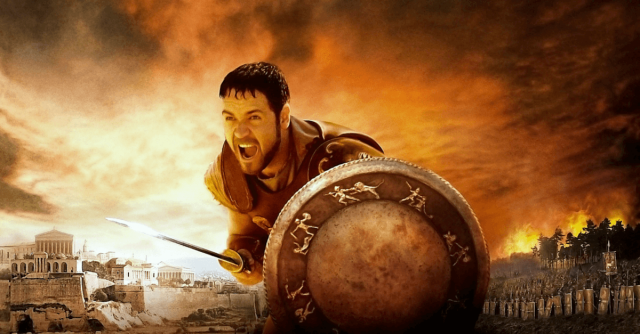Gladiators have garnered quite a lot of popular interest in the last few decades, thanks to films such as Gladiator and Pompeii and series like Spartacus. While it is always good when media can pique interest, it tends to also send out a flood of misconceptions about how things actually worked. Gladiators are thought of today as slave fighters who fought to the death; and if they survived long enough through the constant fighting and poor conditions they might win their freedom. They are portrayed as being among the lowest in the social orders and composed of slaves and prisoners of war. The realities of Roman gladiators were quite a bit different, however.
The main aspect of gladiators that is often misunderstood is the mortality rate. It is assumed that two gladiators enter and only one survives, but the vast majority of the time there was a competitive fight until one gladiator would raise a finger to yield. The organizer of the games, known as the editor, usually the emperor in Rome or a governor elsewhere, would then decide to kill or spare the loser. Unless the loser had an absolutely disgraceful effort, he would almost always be spared. It cost massive amounts of money to house, feed and train gladiators, so losing half of the available gladiators after every event would have been unsustainable.
Gladiators were actually trained more on how to subdue their opponent rather than flat out kill them. As an example a retiarius gladiator armed with a trident and net would likely aim to ensnare and wound his opponent rather than go for a killing blow to an obviously defeated enemy. A gladiator graveyard at Ephesus, modern Turkey, shows evidence of these specific wounds and also shows evidence of extensive medical care, showing how valued and cared for gladiators could be. Occasionally arena deaths did occur and it was possible for an editor to declare a fight to be to the death, though the practice was outlawed by Augustus. If a gladiator was too wounded to survive a fight he was taken out of the arena and put out of his misery via a hammer blow to the skull.
Perhaps the largest misconception of gladiator fights is the thought of thumbs down meaning death and thumbs up meaning sparing the fighter in regards to a wounded gladiator. In reality those hand gestures may not have even been widely used. Even if they were used it seems that thumbs up may have been the gesture for kill, signifying cutting the throat. Other gestures used were an open hand with the palm out possibly signifying dropping weapons or a closed fist.
The average gladiator was a slave, but the life wasn’t actually as bad as many think. A standard career for a gladiator had him see two to three fights a year over three to five years where he could win his freedom. That means a slave would have to get through six to fifteen fights before he could be a free man. The mortality rate wasn’t the best; after all they did fight with real weapons, and anywhere from 20-40% of gladiators didn’t make it to five years.
Despite the mortality rate, being a gladiator was a quite appealing to almost every social class. The poor could join and get food and lodging as well as bonus pay for winning fights. Successful gladiators could be extremely popular with some fighters being known throughout the entire empire from Egypt to Britain. The public often became obsessed with individual gladiators and it was even possible to get souvenir glasses at the games and women paid top dollar for bottled sweat from their favorite gladiator for use as a perfume of aphrodisiac. The huge fame and glory of being a gladiator is what drew many from the upper classes. On some occasions, elite women decided to become gladiatrices to experience thrill and adventure.
Lastly, arenas are known primarily for their gladiator fights however matched one on one combat was simply the main event, and a day at the games consisted of a variety of other events with and without gladiators. Public executions were commonly done during the games and occasionally were done by pitting poorly armed condemned men against lions or even trained gladiators. Before the Coliseum’s underfloor rooms were constructed it was occasionally flooded to create elaborate naval battles complete with sails and archers. The Romans loved to relive their victories so it was also not uncommon for great battles to be reenacted as well.
A fascinating spectacle for most would have been the hunts, where prop trees and rocks were brought in to create a jungle scene and one or more gladiators or specialist hunters would enter the arena with a dangerous wild animal, including lions, tigers and bears (oh my). Though unfortunately a lot of animals were killed, many were also simply shown off; it wasn’t uncommon to present a trained elephant or giraffes, and occasionally ostriches or zebras were trained to pull chariots.
The main event was certainly the gladiators, however. Though they risked death, it was far less common than once believed. Free men often found the fame and riches so tempting that they voluntarily joined. Gladiators enjoyed the fame of modern day professional athletes and could retire after only five years, and make steady money training future fighters.
By William McLaughlin for War History Online

